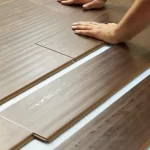
Underfloor heating isn’t just a luxury anymore—it’s becoming a smart, energy-efficient way to keep your toes warm and your energy bills low. Whether you’re renovating or building from scratch, modern systems offer flexibility, efficiency, and, let’s be honest, that unbeatable cozy factor. Here’s the deal: not all underfloor heating is created equal. Let’s break down the latest innovations and how to install them without breaking a sweat.
Types of Underfloor Heating Systems
You’ve got two main players in the underfloor heating game: hydronic (water-based) and electric. Each has its perks, quirks, and best-use scenarios.
Hydronic Underfloor Heating
Think of this as a radiator… but under your feet. Hydronic systems pump warm water through a network of pipes beneath your floor. They’re incredibly energy-efficient, especially when paired with a heat pump or solar thermal system. Perfect for whole-house heating, but—fair warning—installation can be a bit involved.
Electric Underfloor Heating
Electric systems use thin heating cables or mats, making them a go-to for retrofits or smaller spaces like bathrooms. They heat up fast, sure, but they’re usually pricier to run long-term. That said, advances in smart thermostats and zoning tech are making them more efficient than ever.
Cutting-Edge Innovations
The underfloor heating world isn’t stuck in the past. Here’s what’s shaking things up:
- Self-regulating cables: These adjust their heat output based on room temperature—no more overheating or cold spots.
- Low-profile systems: Slimmer designs mean less floor buildup, ideal for renovations where every millimeter counts.
- Smart integration: Pair with Alexa, Google Home, or Apple HomeKit to control warmth with your voice or phone.
- Carbon film heaters: Ultra-thin, flexible panels that heat up evenly and work under almost any flooring type.
Installation Tips You Can’t Ignore
Installing underfloor heating isn’t rocket science, but cutting corners? That’s a one-way ticket to cold feet and repair bills. Here’s how to get it right:
1. Prep Like a Pro
Before laying anything, ensure your subfloor is clean, level, and dry. Any bumps or debris can mess with heat distribution—or worse, damage the system. A moisture barrier? Non-negotiable for concrete subfloors.
2. Choose the Right Flooring
Not all floors play nice with underfloor heating. Tile and stone are champs—they conduct heat beautifully. Engineered wood? Works, but solid wood can warp. Carpets? Keep ’em thin (under 2.5 tog) to avoid blocking heat.
3. Zone Your Heating
Why heat the whole house if you’re only using the kitchen? Smart zoning lets you control temps room by room, saving energy and cash. For hydronic systems, install separate loops; for electric, use multiple thermostats.
4. Test Before You Tile
Before sealing everything under flooring, test the system. For electric mats, check resistance with a multimeter. Hydronic? Pressure-test the pipes. Trust us, fixing a leak now beats tearing up tiles later.
Common Pitfalls (And How to Dodge Them)
Even the savviest DIYers trip up sometimes. Here’s what to watch for:
- Skimping on insulation: Without proper insulation, heat escapes downward instead of warming your room. Use high-quality underlay or insulation boards.
- Ignoring expansion gaps: Floors expand with heat. Leave gaps around edges to prevent buckling.
- Overloading circuits: Electric systems draw serious power. Ensure your wiring can handle the load—or call an electrician.
Final Thoughts: Is Underfloor Heating Worth It?
Underfloor heating isn’t just about comfort—it’s about rethinking how we heat our homes. With smarter tech, easier installation, and rising energy costs, it’s worth a second look. Maybe it’s time to ditch the drafty radiators and step into something warmer.









